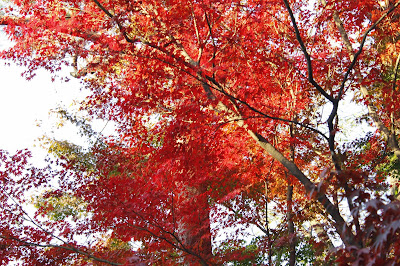How romantic it is to see the stars at night with the
loving persons!
This was the special experience for me to awake my intellectual
instinct. You are able to so shortly realize that science is intriguing,
exciting and interesting live study. What a surprisingly, there is an
Astronomical Observatory in the Seoul Metropolitan center. ‘In the heart of downtown
Seoul’. Compared with that general astronomical observatory is situated in the mountain, the location of this one inside bustling Seoul city is the best of best merit point.
As the reason of my laziness, I mean those kinds of observatory are too
far to get there from the city, I put in a request for an observation program of full
moon and some stars without any hesitation. I had thought that it should be
located at the deep and clean environment such as mountain. To be frank with
me, I was not great hopes to this observation. However it didn’t take a long
time to find out that it was an utterly groundless concern.
 |
| Before observation, We got some beneficial lesson in this room |
High quality, fluent,
profitable, simple terms and proper images were provided for the time being
around two hours experience. What is more, science commentator made us smile so
often. If I learned the science with like as these kinds of lesson, I might be
as a scientist now. After taking a lesson, we went to up to the rooftop where we
could experience to handle telescope and observe the celestial bodies (heavenly
bodies). There were several telescopes for the observation of moon and stars. I
saw the Sirius, the brightest star except the Sun in the Earth night sky, and understood
the meaning of ‘like the shining stars’ (like as diamond).
 |
| building shown on the rooftop |
 |
| moon captured by mobile phone through connected telescope |
I took a photo of the
full moon clearly through connected telescope. How amazing it was! In Planetarium
which was equipped with dome screen of 8 meters and high resolution digital
projector, I could enjoy the virtual observation of constellation (star sign)
and the visual image of moon and space exploration. At that time I seemed to
being an astronaut. In the circular dome observatory rotating ceiling 360
degrees and 7 meters in diameter, we saw the Jupiter having Galilean moons (the
largest of the four moons of Jupiter and discovered by Galileo Galilei in
1610).
 |
| inside the Planetarium,you will see the video image on the lying the chair |
 |
| Circular Observatory Dome with the full moon on the sky |
It was observed at the outside. To be thanks, they prepared the blanket
in advance. So we could did experience more warm and comfortable. Let me
briefly explain you the lesson what I got in the class.
 |
| the solar system |
In Korea, we have good
feeling to the moon as compared with the western countries having negative
feeling. In the past we believed that rabbit lived in there and prayed for ones’
wishes looking up to it on a full moon night. Although everybody knows that
there is no more rabbit in the moon, we still pray for their wishes on a
special full moon night. The Moon is in synchronous rotation with the Earth,
always showing the same face with its near side marked by dark volcanic maria. Scientists
defined that ‘Impact Crater’ is approximately circular depression in the
surface at a planet, moon or other solid body in the solar system and formed by
the hypervelocity impact of a smaller body with the surface. To be interesting,
the craters are named after according to some rules. In case of the Moon, it is
from the scientist’s name. In case of the Mercury, from artist’s one. In case
of the Venus, from women’s name. Very interesting.
 |
| The Moon |
 |
| The Moon surface |
 |
| The Moon Craters names such as Armstrong,Aldrin,Collins-Crews of Apollo11 |
 |
| The Mercury Craters names such as Beethoven,Goya,Liszt-Artists |
This is the picture of the Eugene M.
Shoemaker, geologist, who spent much of his later years searching for and
finding unnoticed or undiscovered impact craters around the world, and
Barringer Crater in Arizona State, USA.
 |
| The Doctor Eugene Shoemaker and the Barringer Crater |
This is the typical appearance of
Meteor Crater and he set a theory about the formation and relation with the
planets of crater and it is now widely accepted as scientific fact. He wanted
to go the moon and he became only the one person who had been gone to after his
death by the Lunar Prospector space probe loading his some of ashes in a
capsule in 1999. This observatory is operated by Donga Science Co.Ltd., It is a
company publishing ‘Donga Science’ and ‘Children Science Donga’ which is the leading
monthly science magazine boasting 22 years biweekly. They have many kinds of
observation programs. Ongoing program, program for adult and on a special day programs
are undergoing. They proceed the program regrettably only in Korean (video images
are given in English). However whatever it is, I would like to recommend to try about this
program.
How to get there; their web site...
click here !!
address – 109 chungparo (Najin Electronics World
building on 7th floor),
yongsan-gu Seoul(용산구 청파로109 나진전자 빌딩
7층)
Tel, +82-2-6749-2000 Fax +82-2-3148-0789
I recommend to use taxi from
the near subway station( line1 Yongsan st.용산역
exit #3 or line4 Shinyongsan st.신용산역
exit #5) because it is not easy to get there on foot from the subway stations. It is far within 5 minutes by tax.




























































